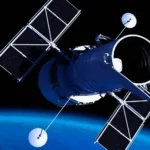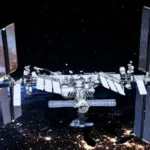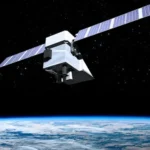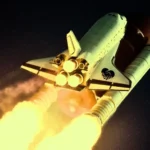Mars, the fourth planet from the Sun, has long captivated humanity’s imagination. Mars exploration has transitioned from speculative fantasy to a tangible scientific endeavor in recent decades. This comprehensive article delves into the intricacies of Mars exploration, chronicling its historical milestones, the technological marvels that propel missions to the Red Planet, and the profound implications of unraveling the mysteries hidden beneath its dusty surface.
A Historical Prelude to Mars Exploration
The fascination with Mars dates back centuries, with early astronomers observing its distinctive reddish hue. However, it wasn’t until the space age that humanity could embark on missions to study Mars up close. The Mariner and Viking missions in the 1960s and 1970s paved the way for systematic exploration, offering crucial insights into the Martian atmosphere, geology, and the potential for extraterrestrial life.
The Mariner and Viking Missions: Pioneering Martian Exploration
Mariner 4, in 1965, captured the first close-up images of Mars, revealing a cratered and barren landscape. Building on this success, the Viking program, with Viking 1 and 2 in 1976, marked the first successful landings on Mars. These missions conducted experiments to search for signs of life, analyzed soil samples, and laid the foundation for subsequent Mars exploration endeavors.
Mars Rovers: Unleashing Robotic Explorers
Advancements in robotics heralded a new era of Mars exploration, epitomized by the Mars rovers. The Sojourner, Opportunity, Spirit, Curiosity, and Perseverance rovers have traversed Martian terrain, conducting experiments, analyzing rocks, and searching for evidence of past or present life. These rovers represent technological marvels, expanding our understanding of Mars and igniting public interest in the quest for extraterrestrial life.
Technological Marvels Enabling Mars Exploration
Mars exploration relies on cutting-edge technologies that overcome the challenges posed by the planet’s distance, harsh environment, and the need for autonomous operations. The innovations powering these missions encompass propulsion systems, communication technologies, and sophisticated scientific instruments designed to unravel the mysteries of Mars.
Propulsion Systems and Interplanetary Travel
Launching spacecraft on interplanetary trajectories require powerful propulsion systems capable of traversing the vast distances between Earth and Mars. Propellant-efficient engines, like ion propulsion, enable spacecraft to reach Mars precisely and efficiently. These propulsion technologies are fundamental to the success of Mars exploration missions, ensuring spacecraft can navigate the complex trajectories required for orbital insertion and landings.
Communication Technologies and Deep Space Networks
Maintaining communication with spacecraft millions of miles away necessitates advanced communication technologies. Strategically positioned on Earth, Deep Space Networks play a pivotal role in tracking and communicating with Mars probes. These networks ensure a reliable data flow between Earth and Mars exploration missions, facilitating real-time control and data transmission.
Mars Orbital Infrastructure: Eyes in the Martian Sky
Beyond surface missions, Mars exploration includes a network of orbiters that serve as the eyes and ears of scientific observation. These orbiters, equipped with advanced imaging systems and scientific instruments, contribute to mapping the Martian surface, studying its atmosphere, and providing crucial data for future lander missions.
Mars Reconnaissance Orbiter and MAVEN
The Mars Reconnaissance Orbiter (MRO) and the Mars Atmosphere and Volatile Evolution (MAVEN) spacecraft exemplify the orbital infrastructure supporting Mars exploration. With its high-resolution cameras, MRO has captured detailed images of Martian landscapes, aiding in selecting landing sites for surface missions. MAVEN, on the other hand, studies the Martian atmosphere, unraveling its composition and evolution.
Future Orbiters and Global Mars Exploration
Upcoming missions, like the European Space Agency’s ExoMars Trace Gas Orbiter and NASA’s Mars Sample Return mission, represent the next frontier in Mars orbital infrastructure. These missions aim to further our understanding of Mars’ geology, search for traces of past life, and lay the groundwork for the unprecedented task of returning Martian soil and rock samples to Earth.
Unraveling Martian Mysteries: Scientific Discoveries
Mars exploration is fundamentally a scientific endeavor driven by the quest to unravel the mysteries of the Red Planet. Scientific instruments aboard orbiters, landers, and rovers are designed to analyze Martian soil, study its geology, and investigate the potential habitability of this neighboring world.
Search for Signs of Life: Past and Present
One of the primary objectives of Mars exploration is to determine if life ever existed on the planet. Rovers like Curiosity and Perseverance are equipped with instruments capable of analyzing soil and rock samples for organic molecules, providing clues about Mars’ past habitability. This search for signs of life extends to investigating ancient riverbeds, lakebeds, and the potential subsurface presence of liquid water.
Geological Insights and Martian Climate Studies
Mars exploration missions contribute significantly to our understanding of the planet’s geology and climate. With their mobility and analytical tools, rovers traverse diverse terrains, examining rock formations and uncovering the planet’s geological history. Additionally, data from orbiters and landers enhance our comprehension of Martian climate patterns, past water cycles, and the potential for liquid water beneath the surface.
Preparing for Human Exploration: The Artemis Program
As the scientific community delves deeper into Mars exploration, preparations for human missions are gaining momentum. Initially focused on lunar exploration, NASA’s Artemis program lays the groundwork for the eventual leap to Mars. The technologies, habitats, and life support systems developed for lunar missions contribute to understanding the challenges posed by long-duration human spaceflight and colonization on Mars.
In-Situ Resource Utilization and Sustainable Mars Missions
The success of human missions to Mars hinges on the in-situ resource utilization (ISRU) concept. Mars exploration includes studying local resources, such as water ice, that could generate fuel, produce oxygen, and sustain human colonies. ISRU represents a critical component of sustainable Mars missions, reducing the reliance on Earth for essential supplies.
Challenges and Solutions for Human Exploration
Mars exploration presents unique challenges, particularly with human missions. Addressing these challenges requires innovative solutions, such as advanced life support systems, radiation shielding, and psychological support for long-duration space travel. The lessons learned from robotic missions contribute vital insights into overcoming the hurdles of sending humans to Mars.
Conclusion
Mars exploration stands at the forefront of humanity’s quest to comprehend the mysteries of our celestial neighbors. From the early Mariner missions to the technologically sophisticated Mars rovers and orbiters of today, each mission represents a stride towards unraveling the secrets hidden beneath the Martian surface.
As we envision a future with human footsteps on Mars, the collective efforts of scientists, engineers, and space agencies worldwide propel us closer to understanding the enigmatic Red Planet’s past, present, and potential future. Mars exploration expands our scientific knowledge and fuels the human spirit’s innate curiosity to explore the cosmos and seek answers to the profound questions that lie beyond our earthly confines.












